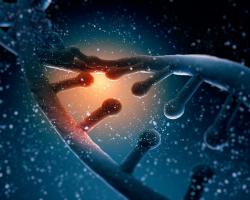 It’s no surprise that good communication with clinical staff is a significant attribute for patient satisfaction. Numerous studies have highlighted the importance of an open and honest dialogue between clinicians and their patients.
It’s no surprise that good communication with clinical staff is a significant attribute for patient satisfaction. Numerous studies have highlighted the importance of an open and honest dialogue between clinicians and their patients.
 It’s no surprise that good communication with clinical staff is a significant attribute for patient satisfaction. Numerous studies have highlighted the importance of an open and honest dialogue between clinicians and their patients. Not only is this a critical element for patient satisfaction, but communication breakdown is often cited as a significant contributing factor in medical mistakes and litigation.
It’s no surprise that good communication with clinical staff is a significant attribute for patient satisfaction. Numerous studies have highlighted the importance of an open and honest dialogue between clinicians and their patients. Not only is this a critical element for patient satisfaction, but communication breakdown is often cited as a significant contributing factor in medical mistakes and litigation.
It turns out that communication is also a big deal for physician satisfaction in the workplace. As reported by Drs. Robert Stark and Dan Whitlock for H&HN Daily, communication ranks high in a recent survey of physicians’ perception of their organizations’ culture. The authors point out that poor communication is often cited as a root cause of medical staff dissatisfaction and cultural discordance between administrators and physicians. This has a bearing not only on physician satisfaction but also on recruitment and retention. Considering the high costs associated with physician turnover, healthcare administrators would be wise to pay more attention to how they are communicating. They may also wish to invest in better tools to keep medical staff and employees better informed.
On a scale of 1 to 10, the top attributes cited by physicians regarding cultural fit with their organization were:
- respectful communication (8.6 average score)
- patient-centered care focus (8.5)
- supportive management approach to errors (8.5)
- transparent communication (8.4)
The authors of the survey also suggested a roadmap for improving physician dissatisfaction and closing the gap with physician culture. Recommendations were.
- Ensure that physicians are involved in decision-making at every step.
- Discuss the initiative openly, at the individual and group level. Outside facilitators can be helpful in encouraging openness and creating a safe environment to shareideas and concerns.
- Provide individual mentoring for those who need more help or who are struggling.
- Offer training to improve communication skills, manage conflict or handle resilience toward change.

- Measure progress periodically and adjust tactics, as needed.
- Communicate results honestly and constructively.
Note how much importance is placed on good communication and sharing of information.
I bring this to your attention because today’s progressive healthcare organizations are using tools and technologies that can help administrators, clinicians and other staff communicate better amongst themselves and with others inside and outside the organizations. Unified communication technologies like Microsoft Lync make it easy for staff to stay in touch via messaging, voice and video communication no matter where they are. Corporate portals using SharePoint and cloud services like Office 365 help keep employees on the same page and allow for seamless and secure collaboration. Corporate social networking tools like Microsoft Yammer provide a way for medical staff and employees to engage in open and ongoing conversations on the topics they care about.
Communication matters. Are you giving your staff all the tools they need to keep the conversation going?
Bill Crounse, MD Senior Director, Worldwide Health Microsoft










